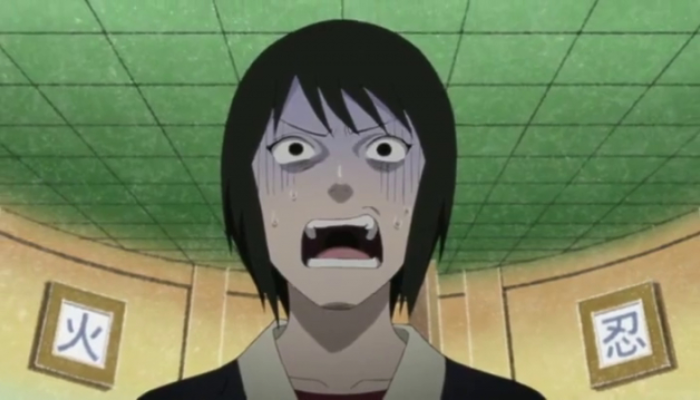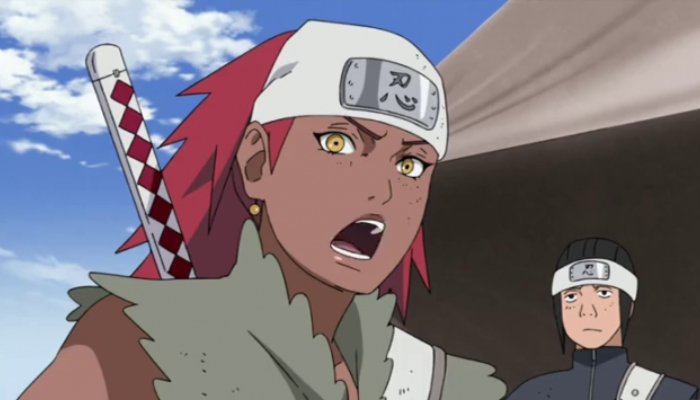Naruto’s Viesulo Kronikos is a fascinating, action-packed series that captures the essence of adventure, power, and friendship. As the name suggests,narutas viesulo kronikos this series delves into the mysteries surrounding powerful forces of nature and the intricate narratives built around them. The title, Viesulo Kronikos (which translates to “Wind Chronicles”), hints at a world where wind plays a crucial role, not just as a natural element, but as an essential theme within the storyline. In this article, we will take a closer look at the core themes, characters, plot development, and the overall impact of Naruto’s Viesulo Kronikos in both the literary and anime worlds.
Understanding the Concept of Viesulo Kronikos
The term Viesulo Kronikos may sound foreign to many,narutas viesulo kronikos especially those unfamiliar with the deeper layers of Naruto’s expansive universe. This phrase, meaning “Wind Chronicles,” brings forth the idea of an overarching narrative in which the wind is not only symbolic but also a pivotal element in shaping the course of events. Wind, in many ancient cultures, represents change, freedom, and uncontrollable forces—attributes that perfectly align with the characters’ journeys throughout the series.
In Naruto’s Viesulo Kronikos, the wind acts as both a literal and metaphorical force. Characters navigate through fierce storms and gentle breezes alike, representing their inner struggles, growth, and relationships. The “wind” often symbolizes the unpredictable nature of the ninja world, where even the most carefully laid plans can be disrupted by unseen forces. The chronicles, or kronikos, document this journey, revealing the layers of strategy, conflict, and the ultimate quest for balance.
The beauty of Viesulo Kronikos lies in its ability to blend both the visual spectacle of nature’s forces with the narrative depth of personal stories. Through its unique storytelling method, it brings an unparalleled level of realism to the world of Naruto, turning the wind into a symbol of change and evolution.
Major Characters in Naruto’s Viesulo Kronikos
At the heart of Naruto’s Viesulo Kronikos are the characters whose development intertwines with the unpredictable nature of the wind.narutas viesulo kronikos Whether it’s the main protagonist, Naruto Uzumaki, or the supporting characters, each person faces challenges tied to the broader theme of the wind’s power.
One of the most notable characters in the Wind Chronicles is Gaara, the Kazekage of the Hidden Sand Village. Gaara’s connection to the wind is deeply symbolic—his very existence has been shaped by the harsh desert winds of his homeland. Over time, as his character evolves, so too does his relationship with the wind, transitioning from a symbol of isolation to a source of strength and compassion. Gaara’s growth mirrors the changing winds: harsh and unyielding at first, but eventually calm and nurturing.
Naruto Uzumaki, with his unrelenting spirit, embodies the other side of the wind—one that is rebellious and defiant. Despite facing constant rejection, Naruto’s resilience pushes him forward, much like a gust of wind that refuses to be contained. The interplay between Naruto’s tenacity and the force of nature around him emphasizes his role as both a disruptor and a unifier in the world of Viesulo Kronikos.
The Role of Wind in the Series’ Conflict
Wind, both as a literal and symbolic force,narutas viesulo kronikos plays a central role in the conflicts that arise throughout Naruto’s Viesulo Kronikos. From the earliest episodes to the more advanced arcs, the wind is a constant presence, influencing the characters’ decisions and the outcomes of battles.
One of the most striking aspects of the wind’s influence in the series is its ability to shape not only the geography of the ninja world but also the psychological landscapes of the characters. For example, during the battles in the Hidden Sand Village, the wind creates obstacles, forcing the characters to adapt and think strategically. Whether it’s during the Chuunin Exams or more significant confrontations, the wind serves as both an adversary and an ally. The shifting winds reflect the turmoil of war and the need for constant adaptation, much like the ninja themselves must evolve to meet new challenges.
Moreover, the wind acts as a catalyst in the series’ emotional development. In particular, the wind symbolizes the isolation many of the characters experience, especially those born from troubled pasts. For instance, characters like Naruto and Gaara often feel like they are being pushed away by the harsh winds of fate, yet they learn to find strength in these very winds, turning them into something more constructive.
The Cultural Significance of Wind in Naruto’s Universe

In Naruto’s Viesulo Kronikos, the wind is not just a physical force but also carries a profound cultural meaning within the ninja world.narutas viesulo kronikos The significance of wind can be seen through the different villages, each with their unique connection to elements of nature. In the Hidden Sand Village, where wind is prevalent, the culture and way of life are heavily influenced by the desert winds, shaping their strategies and ways of thinking.
Wind, in this sense, becomes a cultural symbol of resilience and adaptability. The sand ninjas must harness the power of wind to survive in their harsh environment, where every gust could either be an enemy or an ally. This relationship with the wind mirrors the way in which their personalities and actions are shaped by their circumstances, as they learn to survive and thrive in an ever-changing world.
The themes of survival, evolution, and harmony with nature in Viesulo Kronikos also play into the deeper philosophical teachings of the series. The wind, much like the other natural elements in the series, represents the interconnectedness of all things and the importance of balance. It’s a reminder that even in the most turbulent times, there’s potential for growth and transformation.
Impact and Legacy of Naruto’s Viesulo Kronikos
Since its inception, Naruto’s Viesulo Kronikos has left an indelible mark on the world of anime and literature. The series has introduced fans to a new way of perceiving the natural world,narutas viesulo kronikos turning something as simple as the wind into a powerful narrative force. The impact of Viesulo Kronikos has reached far beyond the confines of the Naruto universe, influencing other works and sparking deep discussions about the symbolism of nature in storytelling.
One of the most significant contributions of Naruto’s Viesulo Kronikos is its ability to combine action, character development, and philosophical themes in a way that resonates with a wide audience. The integration of nature’s forces into the fabric of the narrative elevates it from a typical action series to a profound commentary on life, struggle, and growth.
As fans continue to explore the Wind Chronicles, the series continues to inspire discussions, fan theories, and analyses. It has cemented itself as a cornerstone of anime storytelling, leaving a legacy of creativity and philosophical depth that will continue to influence generations of fans and creators alike.
Conclusion:
Naruto’s Viesulo Kronikos is more than just a chronicle of battles and adventures; it is a testament to the power of storytelling and its ability to use natural elements like wind to explore deeper philosophical themes. The series blends the mystical with the real,narutas viesulo kronikos drawing on the symbolism of the wind to highlight character growth, conflict, and the importance of balance. For anyone interested in diving into a world where nature itself plays an integral role in the narrative, Naruto’s Viesulo Kronikos offers a compelling journey of adventure, discovery, and transformation.
FAQs about Naruto’s Viesulo Kronikos
1. What does the title Naruto’s Viesulo Kronikos mean?
The title translates to “Naruto’s Wind Chronicles,narutas viesulo kronikos” with Viesulo meaning “wind” and Kronikos referring to “chronicles,” symbolizing a story where wind plays a central theme.
2. Who is the main character in Viesulo Kronikos?
Naruto Uzumaki is the primary protagonist, whose journey and growth are deeply intertwined with the symbolic presence of wind in his world.
3. How does wind influence the characters in the series?
Wind represents change, struggle, and growth for the characters, with their battles and emotional journeys often mirroring the unpredictable and powerful nature of the wind.
4. What role does Gaara play in the story?
Gaara is a key character whose connection to wind is symbolic of his transformation from a troubled individual to a compassionate leader, illustrating the power of personal evolution.
5. Why is wind so important in the narrative?
Wind is a metaphor for the unpredictable forces that shape the characters’ lives,narutas viesulo kronikos and it serves as both a literal element in battles and a symbolic force representing change.
6. How does Naruto’s Viesulo Kronikos differ from other anime series?
It integrates the theme of wind in a unique way, blending it into the narrative to reflect emotional growth, conflict, and the cyclical nature of life.
7. Can the wind symbolize anything beyond nature in the series?
Yes, it often represents internal struggles, the passage of time, and the evolving relationships between characters.
8. What cultural significance does wind have in the series?
Wind represents resilience, adaptability, and survival, particularly in the Hidden Sand Village, where the harsh desert winds shape their way of life.
9. How has Viesulo Kronikos influenced other works?
The series has inspired numerous other anime and literature by demonstrating how natural elements can be used to enhance storytelling and philosophical themes.
10. Is there a deeper philosophical message in Naruto’s Viesulo Kronikos?
Yes, the series explores themes of growth, balance,narutas viesulo kronikos and harmony with nature, encouraging viewers to reflect on their own lives and the forces that shape them.





